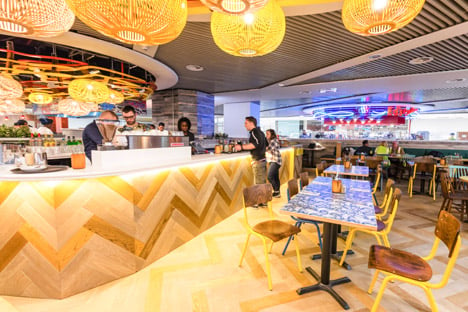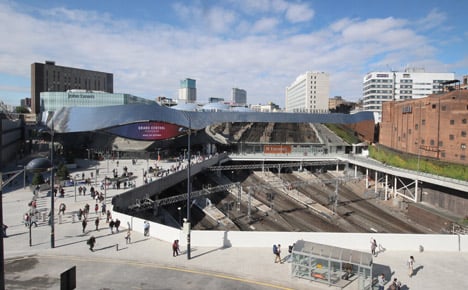Alejandro Zaera-Polo updates Birmingham's New Street station
Architecture firm AZPML has completed its £750 million overhaul of Birmingham New Street railway station in the UK – but co-founder Alejandro Zaera-Polo says the result "could have been much better".

The design by AZPML – headed up by architects Zaera-Polo and Maider Llaguno – features a reflective stainless-steel facade that wraps around the existing 1960s station building, with a giant new atrium in the centre.
The building's steel skin was designed to reflect trains pulling in and out of the station and the surrounding cityscape, while the atrium is covered in a roof made of transparent ethylene tetrafluoroethylene plastic.

The new vaulted roof sits on the columns of the original station building to enclose a public concourse and two tiers of shopping, including an AZPML-designed John Lewis department store with a glazed facade.
But when the station reopened as Grand Central Birmingham last week, Zaera-Polo – former dean of Princeton's School of Architecture – issued a statement saying the result was not as intended.

The statement comes after a dispute between Network Rail and AZPML over changes to the design. AZPML expressed concerns over detailing of girders and a walkway, which it said created an incongruence between the existing and added structures. These include a new roof which was "designed as if it had grown organically from the old structure".
According to Zaera-Polo, Network Rail made a "serious strategic mistake" by using changing some of the materials – parts of the stainless steel originally specified have been replaced with aluminium, while seamless plasterwork inside has been swapped for fabric.

"The concept was based on the over-cladding of the old station with a stainless steel reflective membrane which would be able to show, reflected on the new skin, the now-invisible trains arriving to the station, the commuters flocking inside of the building and the new Birmingham sky, which is bright and sunny because of climate change and clean industry!" said Zaera-Polo.

"While we are proud of our involvement in this project, which has recycled an old infrastructure instead of building a new one in a less ideal location with substantial ecological and economical impact, we believe that it could have been much better, and there are lessons to be learned from the process," he added.

Zaero-Polo won the international competition to redevelop Birmingham New Street railway station in 2008, while working at Foreign Office Architects – the firm behind the tile-covered campus for London art school Ravensbourne College – which he set up with architect and wife Farshid Moussavi.
After the couple split and FOA disbanded in 2009, Zaero-Polo set up his own studio in 2011. Llugano joined as a principal in 2013 to form AZPML, which has offices Zurich, London and Princeton.

The revitalisation of the Birmingham station forms part of the late Clive Dutton's Big City Plan for Birmingham. As regeneration director for the city, Dutton also oversaw the development of Mecanoo's Library for Birmingham – a public library featuring a sunken amphitheatre, rooftop gardens and a shimmering facade clad with interlocking metal rings.